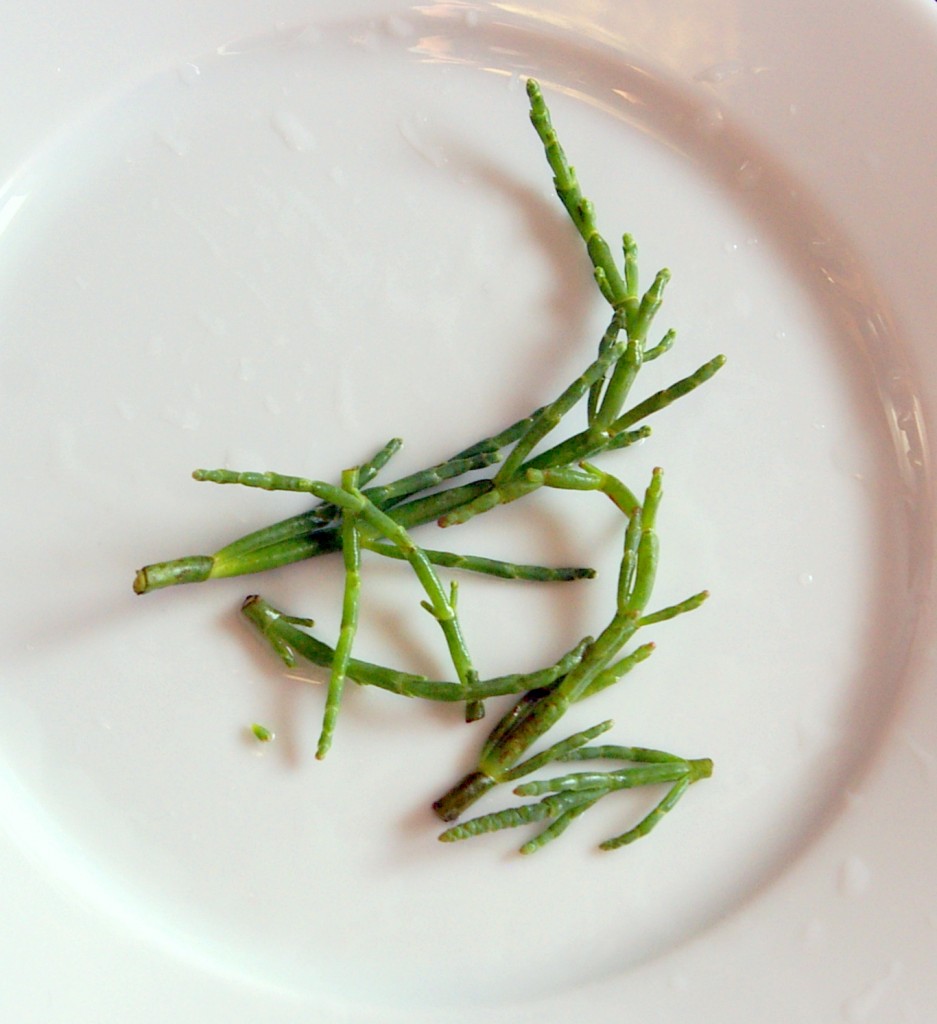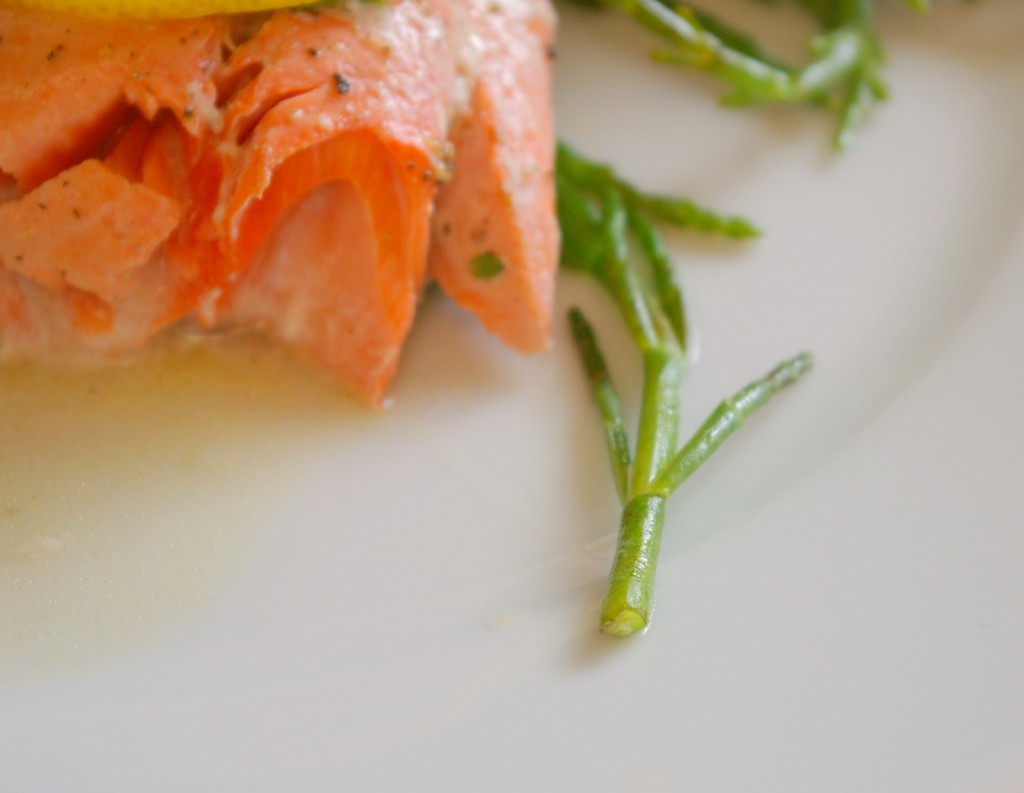Posts in Category: Sea Food
A Few of My Favorite Things: Samphire
Two summers ago, I had samphire for the first time. Â I was a teaching assistant for a Shakespeare course and having a nice dinner in Stratford-upon-Avon and with a fellow T.A. when I bit into an an amazing, salty vegetable. Â My waiter called it samphire, which sounded delightfully exotic. Â Then I remembered watching King Lear the week before and hearing the lines:
Come on, sir; here’s the place: stand still. Â How fearful
And dizzy ’tis, to cast one’s eyes so low!
The crows and choughs that wing the midway air
Show scare so gross as beetles: half way down
Hangs one that gathers samphire, dreadful trade!
Methinks he seems no bigger than his head. (4.6.15-20)
Edgar says these lines to Gloucester as he peers over one of Dover’s cliffs and sees an unlucky man gathering Rock Samphire. Â Thus began my love of samphire!
The salty annual you see pictured above is Marsh Samphire, which grows as an annual in marshy regions of the United States and England. Â It’s best to forage samphire during the spring and summer, although I found these at the Ballard Farmer’s Market last weekend. Â In the U.S., samphire is called Sea Beans or Glasswort, but I still call it samphire (a derivation of Saint Pierre, apparently). Â It’s sometimes called Glasswort because it was used in glass-making because it was so salty.
Tonight, I sautéed some salmon and added the samphire for the last few minutes of cooking, just to blanch it.  It’s crunchy, salty, tangy, and a perfect accompaniment to seafood.  It’s gaining popularity right now in the culinary community, and I wouldn’t be surprised if you start to see samphire/sea beans/glasswort showing up under your seafood or pickled, in your bloody mary.  (The most common way to eat samphire in many vintage recipes is to have it pickled.)
Sautéed Samphire with Thyme and Vermouth
1 tbsp. butter
1 tbsp. olive oil
2 tbsp. vermouth
1 tbsp. chopped thyme leaves
3 cups samphire/sea beans/glasswort
salt and pepper to taste
a squeeze of lemon
1. Heat skillet and add butter. Â Stir until melted. Â Add olive oil and vermouth and stir until mixed.
2. Add samphire and thyme. Â Bring liquid to a simmer and cover with lid for 5 minutes.
3. Uncover and add salt, pepper, and a squeeze of lemon juice. Â Stir until samphire is well-coated.
4. Â Serve with seafood!
(I poached my salmon in the butter, olive oil, and vermouth mixture (along with a little water) and then added the samphire for the last 5 minutes!)
Date Night!
We have a tradition at Chez Butter that we’ve kept up for a while now. Â We both love to cook, but given our work schedules, we don’t often get a chance to cook together. Â So every now-and-then we’ll have a ‘date night’ in which we both cook something fun, go for a walk, and watch a movie.
At a local estate sale we picked up a cookbook created by the Friends of Pike Place Market in 1965.  It’s a tall and skinny cookbook, filled with recipes from the market’s vendors and devotees as well as local restaurateurs.
Two recipes in particular caught our eye, both by Peter Canlis, the founder of Canlis, one of Seattle’s most decorated (and arguably most picturesque) restaurants. Â We decided to try both recipes for our date night.



